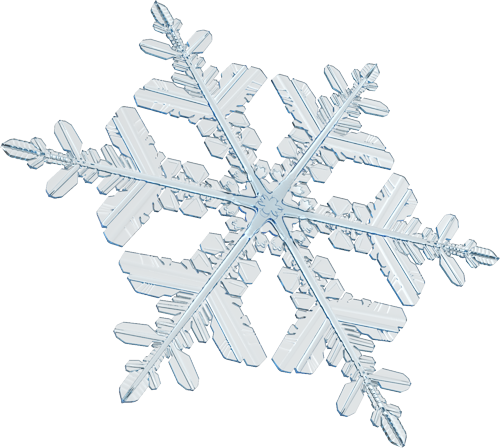The prices of commodities like oil, gold, and agricultural products often have a direct impact on the value of certain currencies. For example, when oil prices rise, currencies from oil-exporting countries such as the Canadian dollar or the Russian ruble often gain strength. On the other hand, if commodity prices fall, those same currencies can weaken. This link exists because nations that rely on exporting raw materials benefit from higher prices, which supports their economies and currency values. in this article, we will discuss about commodities and forex correlation.
Understanding Commodity Pairs

If you’re interested in trading commodities and currencies, getting to know commodity pairs is a smart move. Commodity pairs are currency pairs that are strongly linked to the price movements of certain raw materials, like oil, gold, or agricultural products. For example, the Canadian dollar (CAD) often moves in sync with oil prices, while the Australian dollar (AUD) is closely tied to gold and other minerals. Market participants often pay close attention to the inverse relationship between equities and gold, especially during times of economic uncertainty.
Why Commodity Pairs Matter
These links matter because changes in commodity prices can directly affect currency values. When oil prices rise, the Canadian dollar often strengthens. On the other hand, if gold prices fall, the Australian dollar might weaken. Being aware of these patterns lets you spot opportunities and risks more quickly.
Key Factors to Watch
When trading commodity pairs, keep an eye on:
- Price Movement Analysis: Track how the currency and its related commodity move together. Use charts, news updates, and economic reports to spot trends.
- Market Volatility: Commodity prices can swing rapidly due to supply disruptions, new regulations, or global events. These shifts often spill over into currency markets.
- Trading Psychology: Traders’ emotions often drive price swings. For instance, fear of a global recession can cause both commodity and currency prices to drop.
- Seasonal Trends: Some commodities, like agricultural products, have predictable seasonal cycles that can influence related currencies.
Building Your Trading Plan
By understanding these connections, you can build strategies that help you make more informed choices. For example, if you see oil prices rising, you might consider buying the Canadian dollar. If you expect gold prices to fall, you might look for opportunities to sell the Australian dollar.
Learning how commodity pairs work gives you a clearer picture of the market’s moving parts. This approach helps you react faster and manage risks more effectively, especially during periods of uncertainty. Additionally, understanding inflation expectations can be crucial, as they influence both commodity prices and currency values in the forex market.
Major Currencies in the Commodity Pairs Trade
Some currencies move in step with global commodity prices, and knowing these connections can help you make better trading choices. For example, the Canadian dollar (CAD) often rises or falls alongside oil prices, since Canada is a major oil exporter.
The Australian dollar (AUD) tends to follow shifts in gold prices, reflecting the importance of gold mining to Australia’s economy. The New Zealand dollar (NZD) is influenced by dairy prices because dairy products are among New Zealand’s top exports. February 2024 volatility in major forex pairs also had notable effects on these commodity currencies, as rapid changes in economic data and central bank policies rippled through global markets.
These links mean that when commodity prices change, the related currencies often move in the same direction. For traders, keeping an eye on commodity news and price trends can give early clues about where these currency pairs might be headed. Since market sentiment can shift rapidly on global news or economic releases, monitoring these factors alongside commodity movements helps traders anticipate currency swings more accurately.
For instance, a sudden jump in oil prices can strengthen the Canadian dollar against major currencies like the US dollar. Similarly, a fall in global dairy prices might weigh on the New Zealand dollar.
Currency Correlations to Key Commodities
Understanding the link between currencies and commodity prices can give traders an edge in the foreign exchange market. Many major currencies are tied to the performance of key commodities due to their country’s economic structure.
Oil and the Canadian Dollar
Canada is one of the world’s top oil exporters. As a result, the value of the Canadian dollar often rises and falls with changes in oil prices. When oil prices go up, the Canadian dollar often gains strength because higher oil revenues boost the country’s economy. Incorporating effective risk management is essential when trading commodity-linked currencies, as volatility in commodity markets can quickly impact forex positions. On the other hand, falling oil prices can weaken the currency.
Gold’s Impact on the Australian and British Currencies
Australia is a major gold producer, so changes in gold prices can influence the Australian dollar. When gold prices climb, the Australian dollar sometimes follows.
The British pound is also affected by gold, but more as a safe-haven currency during times of global uncertainty. Investors may move into the pound when gold prices rise due to market stress, seeking stability.
Agricultural Commodities and the New Zealand Dollar
New Zealand’s economy relies heavily on agricultural exports, such as dairy and meat. When global prices for these products increase, the New Zealand dollar often benefits.
Conversely, a drop in agricultural prices can put pressure on the currency.
Why These Relationships Matter
Monitoring the connections between commodities and currencies can help traders anticipate market moves. For example, a sudden jump in oil prices might signal a stronger Canadian dollar in the near future.
By looking at these patterns, traders can make decisions based on real economic factors instead of just charts or speculation.
For traders, understanding forex money management is also crucial in navigating how commodity-driven currency moves impact overall trading risk and profitability.
Trading Strategies Based on Commodity Correlations
Commodity prices, such as oil, gold, and agricultural products, often have a direct impact on currency values. For example, when oil prices rise, currencies from oil-exporting countries like Canada tend to strengthen. By understanding these connections, traders can spot chances to profit from changes in both markets. Monitoring market sentiment indicators can further enhance your ability to anticipate shifts in commodity and currency values.
To use commodity correlations in trading, focus on a few key techniques:
- Spotting Trends with Technical Analysis: Use charts and technical indicators to watch for patterns in both commodity and currency prices. This helps you recognize when a currency might move in response to a shift in a related commodity. Applying support and resistance concepts from forex can further improve your ability to identify potential turning points in correlated markets.
- Practical Risk Management: Always use stop-loss orders and set clear entry and exit points. Because commodity markets can be volatile, managing your risk is key to protecting your capital.
- Watching Commodity Prices for Signals: Keep an eye on market news and real-time prices. If a major commodity like gold or oil spikes, it could signal a move in related currencies.
- Studying Correlations for Currency Predictions: Analyze historical data to see how certain commodities and currencies usually interact. For instance, the Australian dollar often moves in line with gold prices.
Understanding these relationships helps traders time their trades more effectively and find opportunities that others might miss.
Example: If you notice copper prices rising sharply due to increased demand from China, you might consider a long position on the Chilean peso, since Chile is a major copper exporter.
Staying updated with news and using these strategies can give you an edge in the fast-moving world of currency and commodity trading.
Additionally, high liquidity and tight spreads are common characteristics of major forex pairs, which can make trading opportunities based on commodity correlations more accessible and cost-effective.
Leveraging Commodity Pairs for Informed Trading Decisions

Recognizing how commodity prices and currency values interact can help traders make smarter choices in the market. By studying market trends and key economic indicators, you can manage risk more effectively and spot opportunities as they arise. One way to strengthen your trading is by applying effective risk management techniques when analyzing commodity and forex correlations.
Combining technical analysis with an awareness of trading psychology gives you a well-rounded approach to trading commodity pairs. Understanding the impact of margin requirement on your available capital is also crucial when trading volatile markets like commodities and forex.
For example, if oil prices rise, currencies like the Canadian dollar often strengthen because Canada is a major oil exporter. Watching these patterns allows you to anticipate currency movements and adjust your trades accordingly.
This strategy supports you in making well-informed decisions—helping you respond quickly to changes in both commodity and currency markets and fine-tune your trading plan.
It’s also important to pay attention to risk management strategies, as using tools like stop-loss orders can protect your capital when trading volatile commodity pairs.
Conclusion
Analyzing how commodity prices and currency values move together can help traders spot patterns in the market. For example, countries that export large amounts of oil, like Canada, often see their currency rise when oil prices go up. By paying attention to these relationships, traders can predict how changes in commodity prices might impact currency pairs such as USD/CAD or AUD/USD.
Recognizing these trends allows traders to make better decisions about when to buy or sell. For instance, if gold prices are rising, the Australian dollar may also strengthen because Australia is a major gold producer. Using this information, traders can adjust their strategies to manage risk and potentially improve returns.







